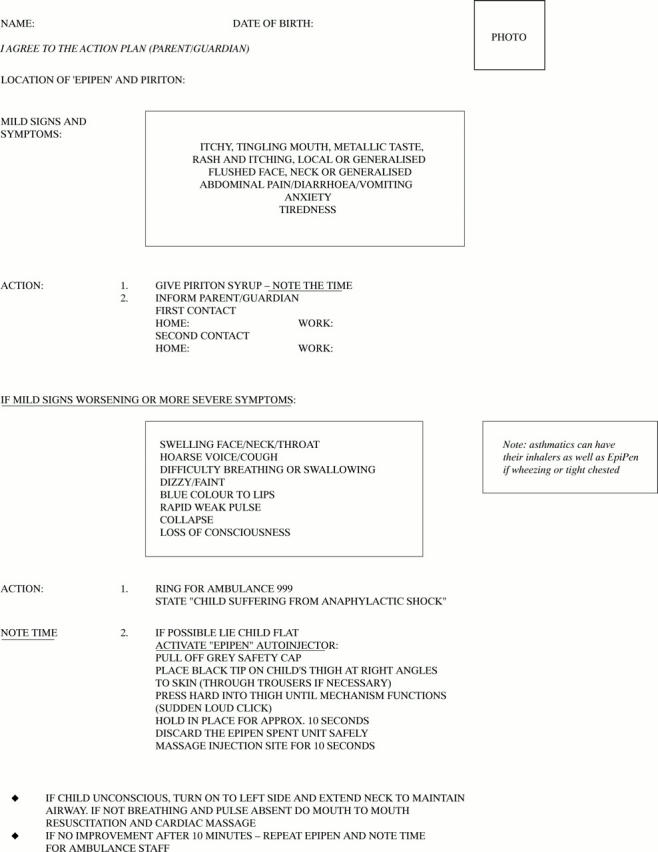Abstract
Aims: To assess the extent of the problem of nut allergy in schoolchildren within the Severn NHS Trust. To determine how well informed schools are about the condition, their policies and attitudes, and the action that would be taken in the event of an acute reaction.
Methods: A questionnaire addressed to the head teacher was sent to 100 randomly selected mainstream schools in the Severn NHS Trust.
Results: Response rate was 83%. There were a total of 21 868 pupils in the schools. Forty five (54%) schools had at least one child currently known to be allergic. The total in all the schools was 87 (0.4%). Only 31 (36%) children had medication available in school. Of these, 18 (58%) had EpiPen alone. Twenty schools (44%) with an allergic child either had no staff trained to administer medication or did not respond to the question. Two (4%) schools with an allergic child had a support assistant for the pupils. Only 19 (43%) schools with a nut allergic child gave information to all teachers about nut allergy and only 21 (47%) gave information to dinner supervisors and other assistants. In only 23 (51%) schools with an allergic child were the cook and catering staff aware of all the children with a nut allergy. Ten (22%) schools with an allergic child served only "nut free dinners". Fourteen (31%) schools with a nut allergic child could not name a single sign of a mild acute allergic reaction (compared to 34 (89%) schools without an allergic child). Fifteen (33%) schools with an allergic child could not state a single sign of a severe acute allergic reaction (compared with 33 (87%) schools without a nut allergic child).
Conclusion: Schools are not sufficiently well informed about nut allergy and management of acute allergic reactions. Policies and attitudes vary. We have revised the information given to schools regarding nut allergy and prepared a new information pack.
Full Text
The Full Text of this article is available as a PDF (119.6 KB).
Figure 1 .

Emergency treatment of acute allergic reaction: action plan in flow chart format.
Figure 2 .

Emergency treatment of acute allergic reaction: alternative presentation of action plan.
Selected References
These references are in PubMed. This may not be the complete list of references from this article.
- Armstrong D., Rylance G. Definitive diagnosis of nut allergy. Arch Dis Child. 1999 Feb;80(2):175–177. doi: 10.1136/adc.80.2.175. [DOI] [PMC free article] [PubMed] [Google Scholar]
- Tariq S. M., Stevens M., Matthews S., Ridout S., Twiselton R., Hide D. W. Cohort study of peanut and tree nut sensitisation by age of 4 years. BMJ. 1996 Aug 31;313(7056):514–517. doi: 10.1136/bmj.313.7056.514. [DOI] [PMC free article] [PubMed] [Google Scholar]
Associated Data
This section collects any data citations, data availability statements, or supplementary materials included in this article.


